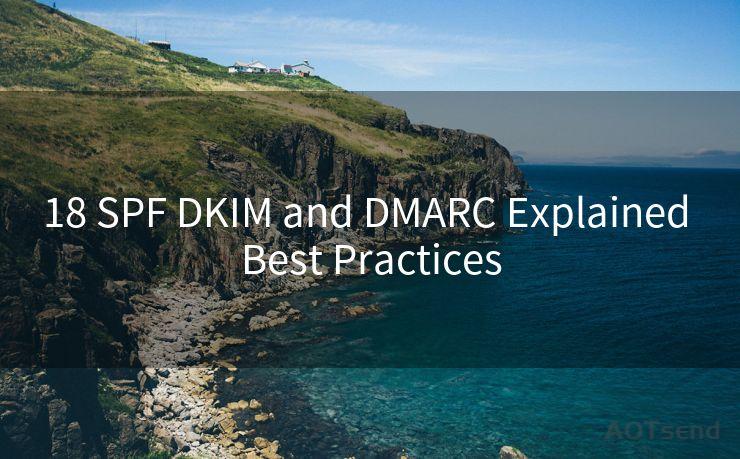18 SPF DKIM and DMARC Explained Best Practices




Email authentication is crucial in today's digital landscape, where phishing attacks and email spoofing are common threats. SPF, DKIM, and DMARC are three essential protocols that, when properly implemented, can significantly enhance the security of your email communications. In this article, we'll delve into the best practices for setting up and using these protocols.

1. Understanding SPF (Sender Policy Framework)
SPF is a DNS-based email authentication method that specifies which IP addresses are authorized to send emails from a particular domain. It helps receivers verify that an email claiming to be from your domain actually originated from an authorized source.
🔔🔔🔔
【AOTsend Email API】:AOTsend is a Managed Email Service for sending transactional emails. Support Email Types: reminders, authentication, confirmations, notifications, verification codes, invoices, password resets, account activations, billing statements, two-factor authentication (2FA), and one-time passwords (OTP) emails, etc. $0.28 per 1000 Emails. 99% Delivery, 98% Inbox Rate.
You might be interested in:
Why did we start the AOTsend project, Brand Story?
What is a Managed Email API, How it Works?
Best 25+ Email Marketing Platforms (Authority,Keywords&Traffic Comparison)
Best 24+ Email Marketing Service (Price, Pros&Cons Comparison)
Email APIs vs SMTP: How they Works, Any Difference?
Best Practice:
- Keep your SPF record up to date, including all authorized sending sources.
- Avoid exceeding the DNS lookup limit (typically 10) to prevent SPF failures.
- Regularly monitor and validate your SPF record using online tools.
2. DKIM (DomainKeys Identified Mail) Explained
DKIM uses cryptographic signatures to verify the authenticity and integrity of an email message. It ensures that the content of the email hasn't been tampered with during transit.
Best Practice:
- Generate a strong private-public key pair and keep the private key secure.
- Sign all outgoing emails with DKIM to ensure their authenticity.
- Monitor DKIM signing and verification failures to identify and address any issues promptly.
3. DMARC (Domain-based Message Authentication, Reporting, and Conformance) and Its Importance
DMARC builds upon SPF and DKIM, providing a policy framework for domain owners to specify how receivers should handle unauthenticated emails. It also enables reporting on email authentication results.
Best Practice:
- Implement a DMARC policy that suits your organization's needs, starting with a monitoring policy and gradually moving to a rejection policy.
- Regularly review DMARC reports to identify and address authentication issues.
- Ensure your email infrastructure supports DMARC and is properly configured.
4. Integrating SPF, DKIM, and DMARC for Maximum Security
For maximum email security, it's essential to integrate all three protocols: SPF, DKIM, and DMARC. This layered approach significantly reduces the chances of spoofing and phishing attacks.
Best Practice:
- Ensure all three protocols are correctly implemented and working in harmony.
- Regularly test your email authentication setup using tools like MX Toolbox or dmarcian.
- Educate your team on the importance of email authentication and how to recognize and report suspicious emails.
5. Conclusion: The Power of Email Authentication
Implementing SPF, DKIM, and DMARC is crucial for protecting your organization's email communications. By following the best practices outlined in this article, you can significantly enhance your email security posture and reduce the risk of falling victim to email-based attacks.
Remember, email authentication is an ongoing process that requires regular monitoring and updating to stay ahead of evolving threats. By staying vigilant and proactive, you can ensure that your organization's emails remain secure and trusted.




Scan the QR code to access on your mobile device.
Copyright notice: This article is published by AotSend. Reproduction requires attribution.
Article Link:https://www.mailwot.com/p5798.html



